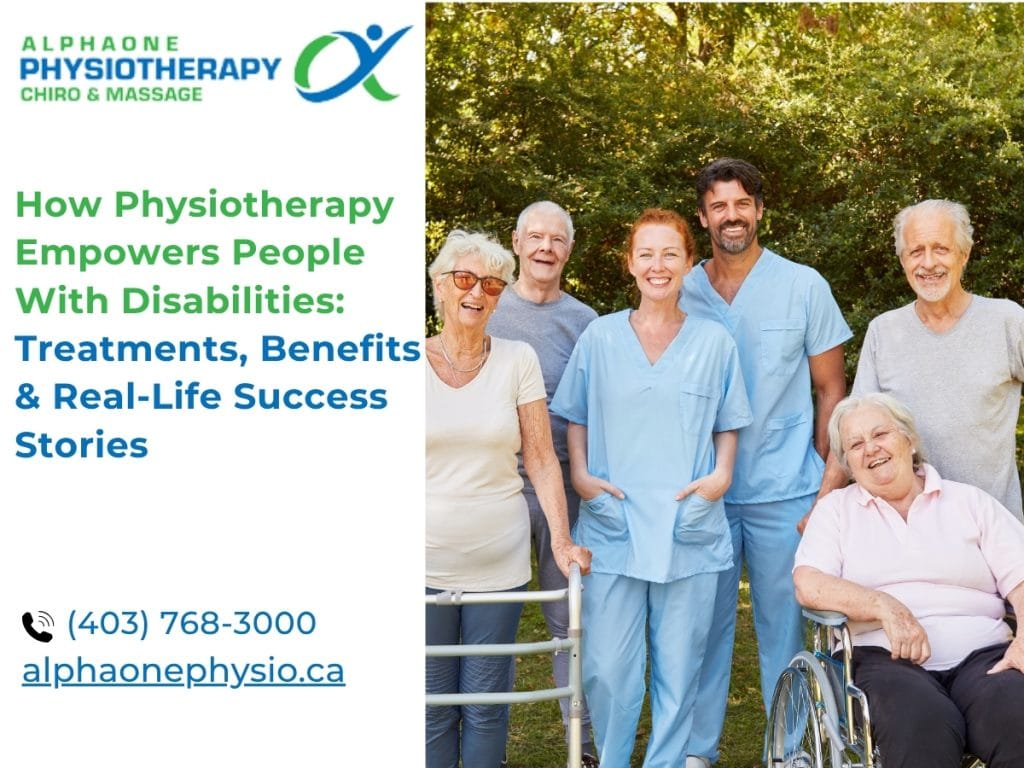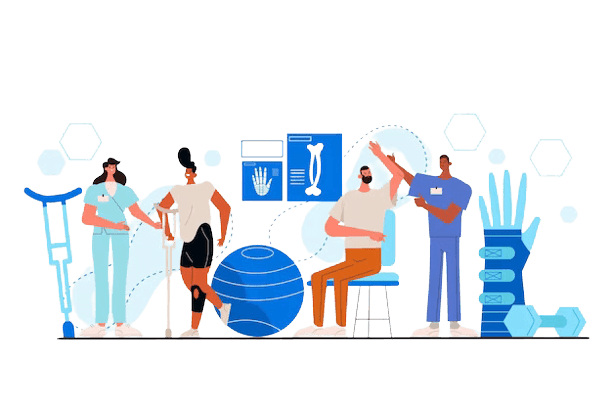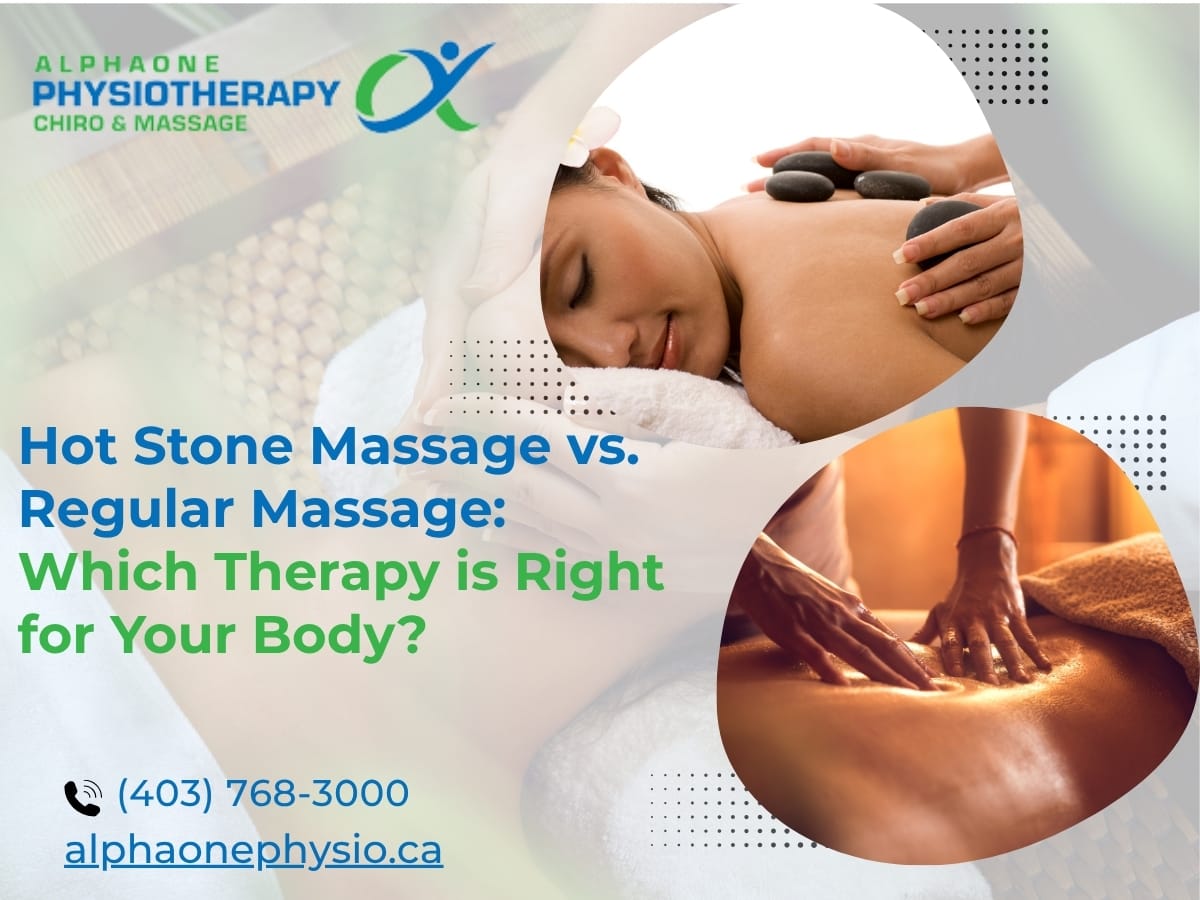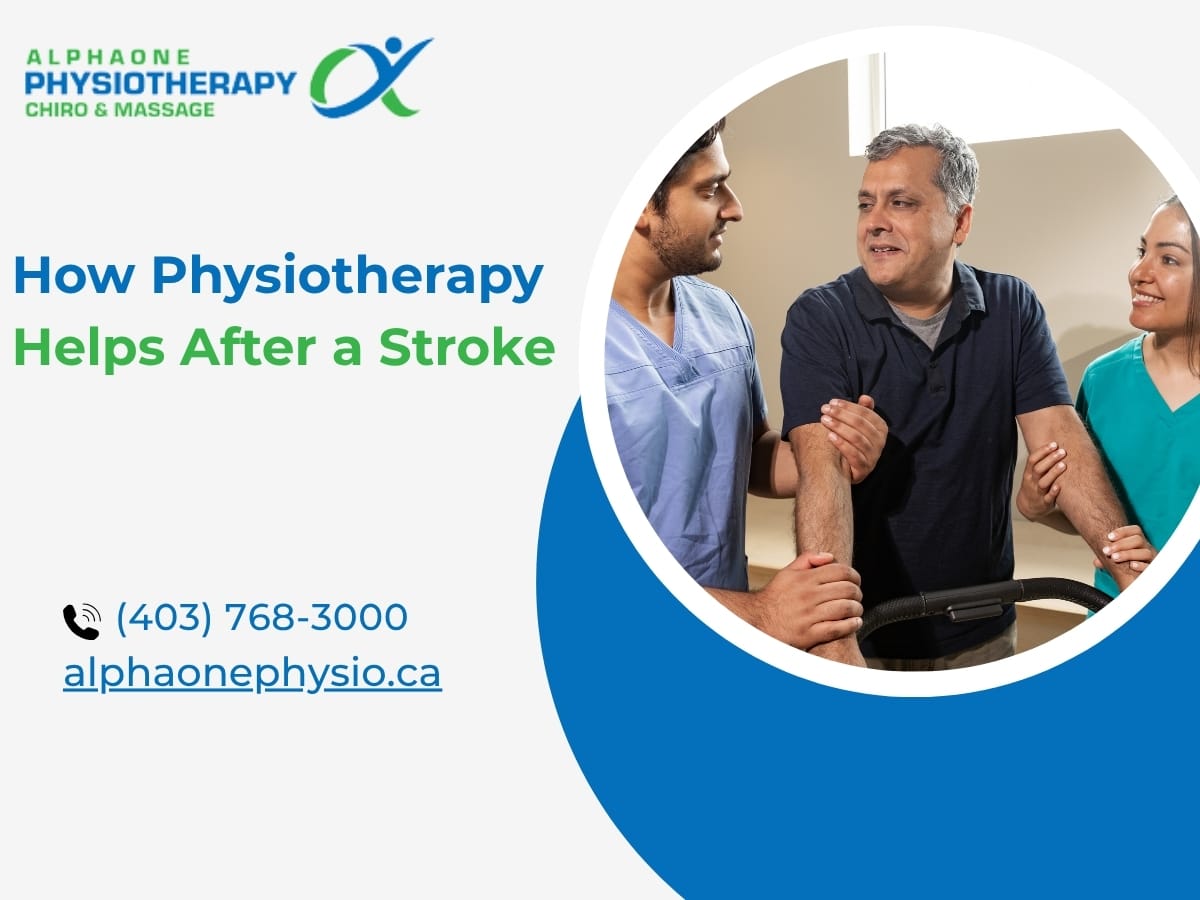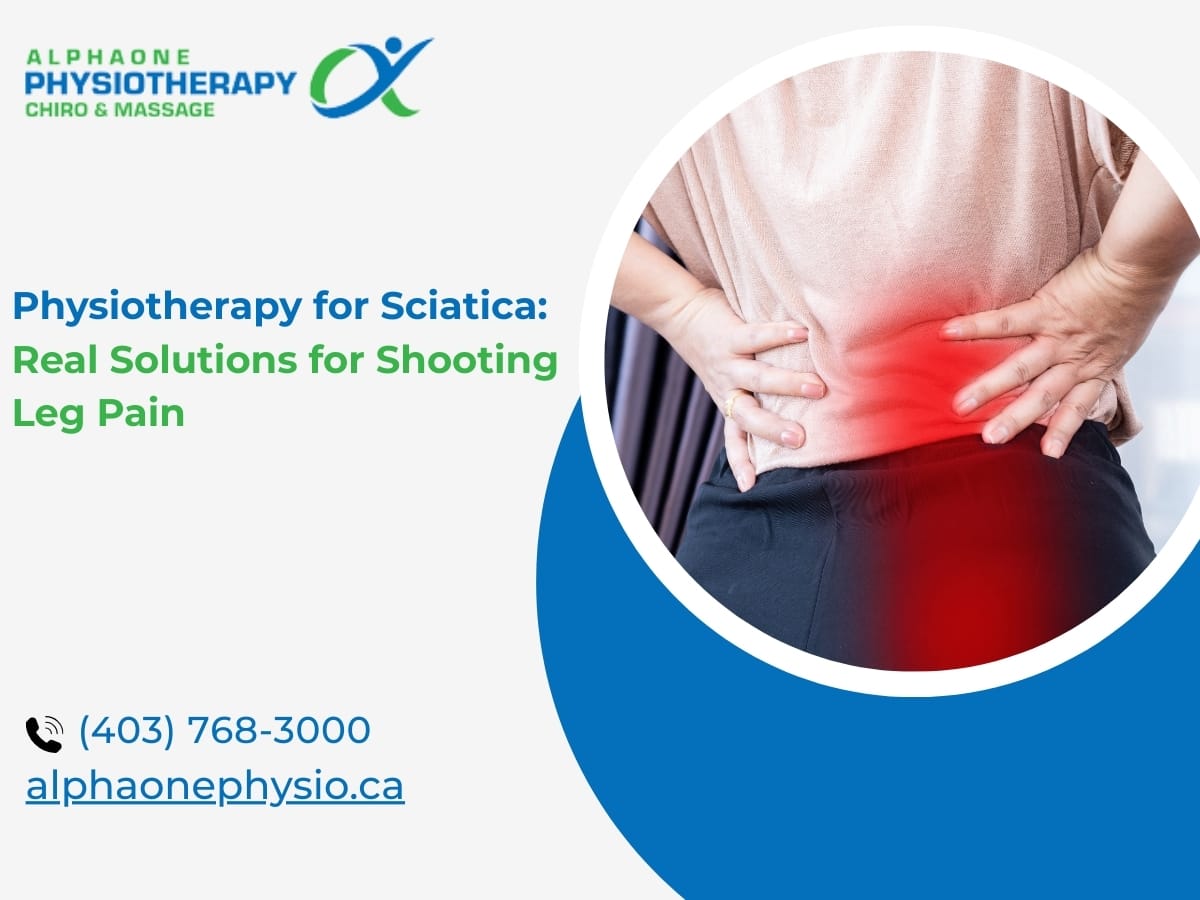Living with a disability can make even simple tasks feel tough, yet progress is absolutely possible. Physiotherapy for disability helps people rebuild strength, improve movement, reduce pain, and regain confidence with plans tailored to real life. Over 1 billion people worldwide live with a disability, and many have taken back control through personalized physiotherapy.
In this guide, we’ll talk about what disability truly means today and get clear answers to the questions that matter most to you.
What is Disability?
Disability comes in many forms. It can affect how someone moves, speaks, thinks, or interacts with the world. Some are born with it. Others acquire it through injury, illness, or progressive conditions. But one thing is constant: the need for support that respects both the physical and emotional journey.
Types of Disabilities
Physiotherapy benefits people across a wide spectrum of disabilities, including:
- Neurological – Conditions like stroke, Parkinson’s disease, multiple sclerosis, or brain injury, where the focus is on restoring coordination and muscle control.
- Intellectual/Developmental Disabilities– Disabilities such as cerebral palsy, autism, or Down syndrome, where therapy supports motor skill development and body awareness.
- Acquired Physical – Conditions that limit movement, strength, or endurance, such as spinal cord injuries, muscular dystrophy, arthritis or limb loss.
- Congenital – Physical conditions present at birth, such as spina bifida, managed with long-term therapy and mobility support.
Why Physiotherapy Matters For Disabled People?
Disability can affect how a person moves, feels, and interacts with the world. Physiotherapy provides a structure for rebuilding strength and confidence in daily life.
Here’s how physiotherapy helps:
- Builds core strength and balance, which reduces the risk of falls or injuries.
- Relieves pain and prevents joint stiffness or muscle tightness.
- Improves posture and movement patterns, which makes daily tasks easier.
- Supports mental well-being by restoring routine and motivation.
- Encourages participation in work, school, and social activities.
- Reduces the risk of complications related to long-term immobility.
Trusted Physiotherapy Techniques That Get Real Results
Each physiotherapy plan begins with understanding the person’s needs, abilities and goals. From there, specific therapies are chosen to address their condition and create meaningful progress.
Adaptive Physiotherapy
- What it is:
Adaptive physiotherapy modifies traditional exercises to suit an individual’s physical abilities, ensuring safe and achievable progress. - Who it helps:
Beneficial for people with permanent disabilities, mobility limitations, or those using assistive devices. - How long it takes:
Timelines vary widely depending on the condition, with progress often visible in 4 to 12 weeks of regular sessions. - What to expect:
Therapists tailor exercises, adapt equipment, and adjust movements to meet your comfort and mobility levels while still challenging your abilities.
Neurophysiotherapy
- What it is:
A specialised branch of physiotherapy that focuses on improving movement and coordination in individuals with neurological conditions. - Who it helps:
Designed for people recovering from stroke, brain injury, Parkinson’s disease, multiple sclerosis, or other nervous system disorders. - How long it takes:
Noticeable improvement may take 6 to 16 weeks, depending on condition severity and therapy consistency. - What to expect:
Includes gait training, balance exercises, motor control retraining, and posture work—often supported with video feedback and progressive challenges.
Pediatric Physiotherapy
- What it is:
Physiotherapy tailored for infants, children, and adolescents, focusing on motor skill development, posture, and functional mobility. - Who it helps:
Supports children with cerebral palsy, developmental delays, Down syndrome, autism spectrum disorder, and post-injury recovery. - How long it takes:
Early improvements may appear within 8 to 20 weeks, though therapy often continues as part of long-term growth and development. - What to expect:
Sessions use play-based exercises, sensory activities, and structured routines to build strength, coordination, and confidence in movement.
Functional Rehab
- What it is:
Therapy aimed at restoring specific skills and movements required for daily living, work, or sports after injury or surgery. - Who it helps:
Ideal for post-surgical patients, joint replacements, sports injury recovery, and people regaining mobility after extended illness. - How long it takes:
Functional rehab usually spans 4 to 12 weeks, depending on the complexity of the goal. - What to expect:
Exercises mimic real-life activities—like lifting, walking on uneven ground, or stair climbing—designed to help you return to your usual lifestyle.
Aquatic Therapy
- What it is:
Water-based therapy that uses buoyancy and resistance to improve mobility, strength, and flexibility while reducing joint stress. - Who it helps:
Effective for arthritis, chronic pain, spinal injuries, neurological conditions, and post-surgical recovery. - How long it takes:
Many people notice improved comfort and movement within 4 to 8 weeks of regular sessions. - What to expect:
Gentle exercises in a heated pool, guided by a therapist, allowing safe, low-impact movement with reduced pain and strain.
Key Benefits of Physiotherapy for Disability Rehabilitation
- Neuroplasticity Activation: It stimulates the brain and body to create new pathways, helping restore movement and function after injury or illness.
- Advanced Balance Training: It strengthens stability, reduces fall risk, and builds confidence in everyday mobility.
- Motor Skill Enhancement: It improves coordination, muscle strength, and precise control in both fine and large movements.
- Social and Emotional Integration: It supports community participation, strengthens relationships, and boosts self-esteem through active engagement.
Common Hurdles in Physiotherapy for Disability
Barriers like limited access to specialised therapists, restricted insurance coverage, and inconsistent motivation can slow progress. Some individuals also resist therapy due to pain, fear, or past negative experiences, which makes strong support essential for success.
Don’t worry, we’ve got the solution. At AlphaOne Physiotherapy, Chiro & Massage – Calgary NE, we have the best physiotherapist in Calgary for disabled people. Additionally, our experienced therapists, personalised care plans and the encouragement needed to keep you moving forward, no matter how badly you are suffering.
The Human Side of Recovery
Beyond physical recovery, physiotherapy plays a vital emotional role:
- Overcoming Adversity – Helping individuals rebuild their lives after injury or diagnosis.
- Body Confidence – Encouraging pride in movement and physical ability.
- Mental Health – Reducing anxiety and depression through improved physical capacity.
- Trauma Recovery – Restoring trust in one’s body after an accident or medical event.
Physiotherapy does not undo permanent damage, but it helps people regain strength, improve movement, and become more independent. It focuses on making everyday tasks easier and helping the body adapt in practical ways.
Physiotherapy should feel safe and manageable. Some movements may feel challenging or cause mild soreness, but sharp pain should not happen. Therapists adjust every plan based on how your body responds. Good communication keeps the process comfortable and effective.
Rehabilitation focuses on restoring specific functions that are limited by injury or disability. Every movement has a purpose related to your condition. Regular exercise improves general fitness. Rehab is designed to help with daily activities like walking, sitting, or reaching. The goals are functional and based on medical needs.
The timeline depends on your goals, your condition, and how your body responds. Some people work with a therapist for a few weeks. Others continue for months or years to maintain progress. It often becomes part of a long-term routine that supports better movement and quality of life.
Yes, physiotherapy supports children by helping them build coordination, strength, and motor skills. It can assist with milestones like sitting, crawling, and walking. The earlier support begins, the easier it becomes to help children grow more confident and active in daily life.
Safe home exercises include seated stretches, resistance band routines, arm and shoulder workouts, and deep breathing. These movements help reduce stiffness, improve strength, and support circulation. A therapist can create a simple routine based on your needs and comfort level.

